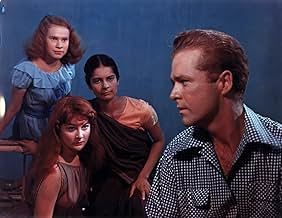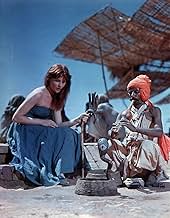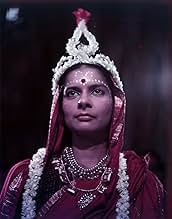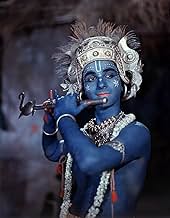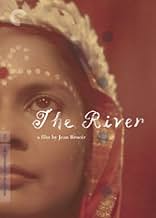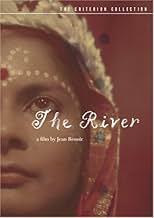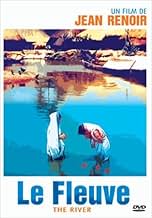The growing pains of three young women contrast with the immutability of the holy Bengal River, around which their daily lives unfold.The growing pains of three young women contrast with the immutability of the holy Bengal River, around which their daily lives unfold.The growing pains of three young women contrast with the immutability of the holy Bengal River, around which their daily lives unfold.
- Nominated for 2 BAFTA Awards
- 3 wins & 4 nominations total
June Tripp
- Narrator
- (voice)
- (as June Hillman)
Nimai Barik
- Kanu
- (uncredited)
Richard R. Foster
- Bogey
- (uncredited)
Jane Harris
- Muffie
- (uncredited)
Jennifer Harris
- Mouse
- (uncredited)
Trilak Jetley
- Anil
- (uncredited)
Bhogwan Singh
- Sajjan
- (uncredited)
Penelope Wilkinson
- Elizabeth
- (uncredited)
Cecilia Wood
- Victoria
- (uncredited)
Storyline
Did you know
- TriviaThomas E. Breen, who plays Capt. John, was really missing one leg like his character.
- Goofs(at around 36 mins) A cigarette appears from nowhere.
- ConnectionsFeatured in Loin (2001)
Featured review
It's difficult to argue with Gabridl's remarks about the film - and I'm sure Renoir would have pleaded guilty as charged. Of not making a civics lesson. So, if that's what you want out of art, then this is not the film for you. At all. You will learn nothing of Indian politics, the "exoticism" will drive you mad, and you'd do better to go back and re-read Said's "Orientalism," as Gabridl suggests.
Renoir went to India, and made a film from the perspective of an entranced outsider looking in, creating his own, personalized world - not India, but Renoir's world, where everything is transitory, including beauty and death, and where every sight and sound becomes that much more precious.
I am glad that we have come so far since I've been a kid, when so many ideas and prejudices carried over from the colonial era were still floating through the air, and it's true that no one except that most naive among us would make a film like THE RIVER today. But Renoir was alive in 1950, not now, and he made his film for his time, and that time attaches itself to the film, just like it does to every artwork. I doubt that even Gabridl would suggest that it was the work of a craven exploiter of the masses, and that its "faults" are not the faults of a corrupt man, but of a generous and compassionate one. It's one of the most generous films I know of.
Finally, I would add that while this is a film made by a westerner for other westerners, it was certainly inspirational to Satyajit Ray, who worked as Renoir's assistant.
Renoir went to India, and made a film from the perspective of an entranced outsider looking in, creating his own, personalized world - not India, but Renoir's world, where everything is transitory, including beauty and death, and where every sight and sound becomes that much more precious.
I am glad that we have come so far since I've been a kid, when so many ideas and prejudices carried over from the colonial era were still floating through the air, and it's true that no one except that most naive among us would make a film like THE RIVER today. But Renoir was alive in 1950, not now, and he made his film for his time, and that time attaches itself to the film, just like it does to every artwork. I doubt that even Gabridl would suggest that it was the work of a craven exploiter of the masses, and that its "faults" are not the faults of a corrupt man, but of a generous and compassionate one. It's one of the most generous films I know of.
Finally, I would add that while this is a film made by a westerner for other westerners, it was certainly inspirational to Satyajit Ray, who worked as Renoir's assistant.
- How long is The River?Powered by Alexa
Details
- Release date
- Countries of origin
- Official site
- Languages
- Also known as
- Der Strom
- Filming locations
- Production company
- See more company credits at IMDbPro
Box office
- Gross worldwide
- $53,357
- Runtime1 hour 39 minutes
- Aspect ratio
- 1.37 : 1
Contribute to this page
Suggest an edit or add missing content



